
The General Staff Building is a historic and majestic building located on the central square of St. Petersburg-Palace Square, opposite the Winter Palace (now the Hermitage).
The building was built from 1819 to 1829, with the participation of architect K. I. Rossi and sculptors S. S. Pimenov and V. I. Demut-Malinovsky.
The construction of the General Staff building was connected with the publication by Alexander I of a decree on the reconstruction of the square in front of the Winter Palace. The official foundation of the General Staff building was begun in 1820 with the construction of the west wing, which included the Felten houses that already existed at that time.
In 1823, the west wing was completed. In 1825, the main construction work on the construction of the east wing was completed.
Today, the General Staff building is an architectural complex that stretches along the entire eastern side of the Palace Square and consists of two wings. The northern facades of the building overlook the Moika River embankment. The total length of the facades is about 580 meters.
The central part of the General Staff building has the shape of a semicircle, concave relative to the Palace Square, with architectural decorations.
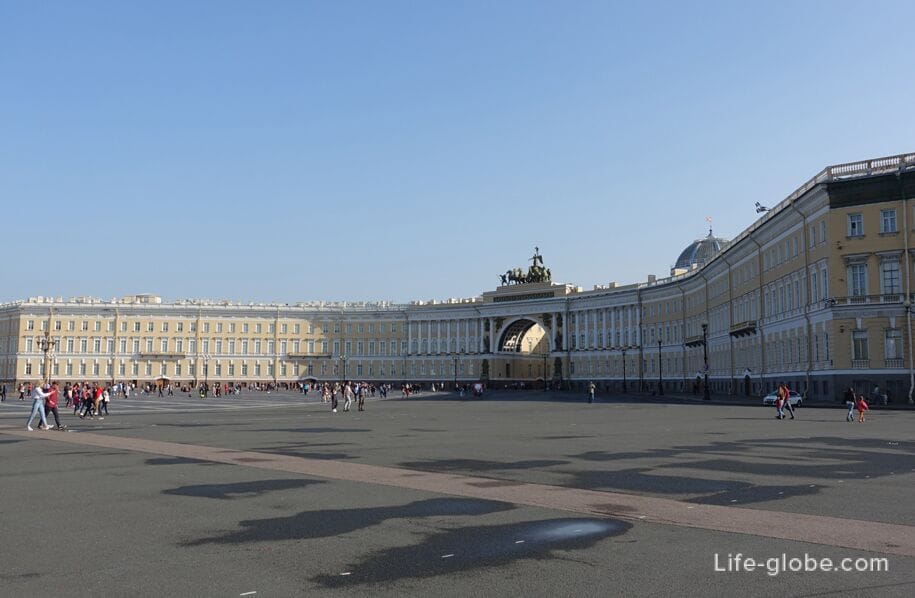
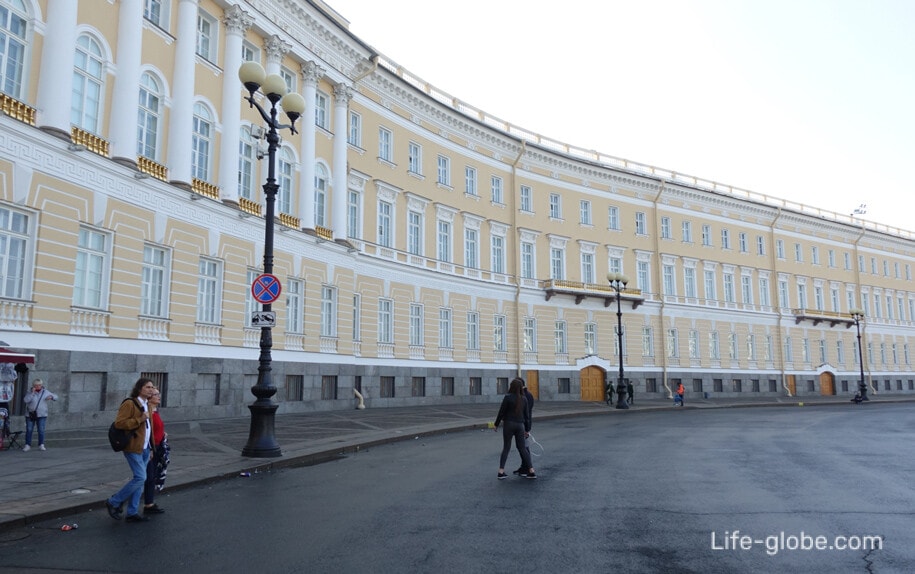
View of the General Staff building and Alexander column from the Palace Square

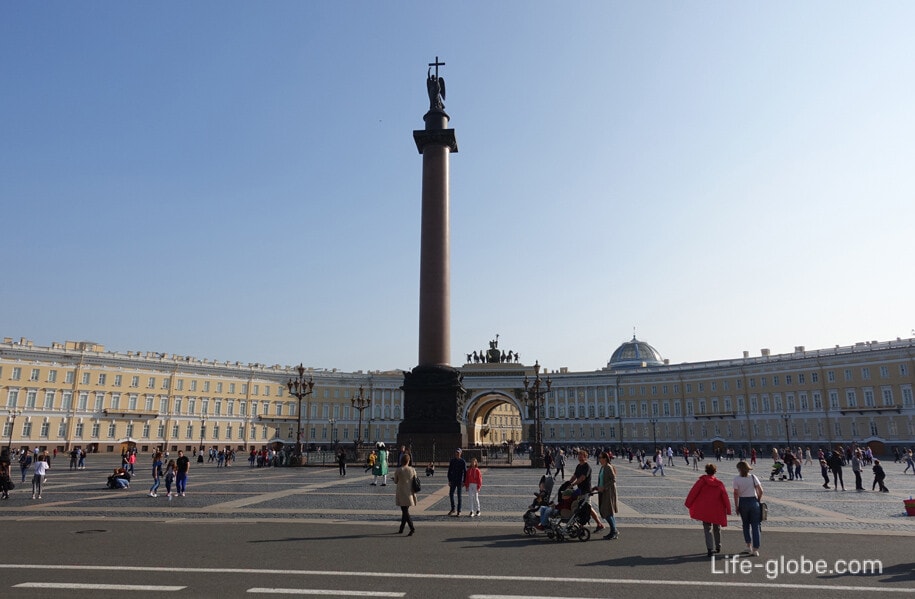
Photo of the General Staff building from the Moika River embankment
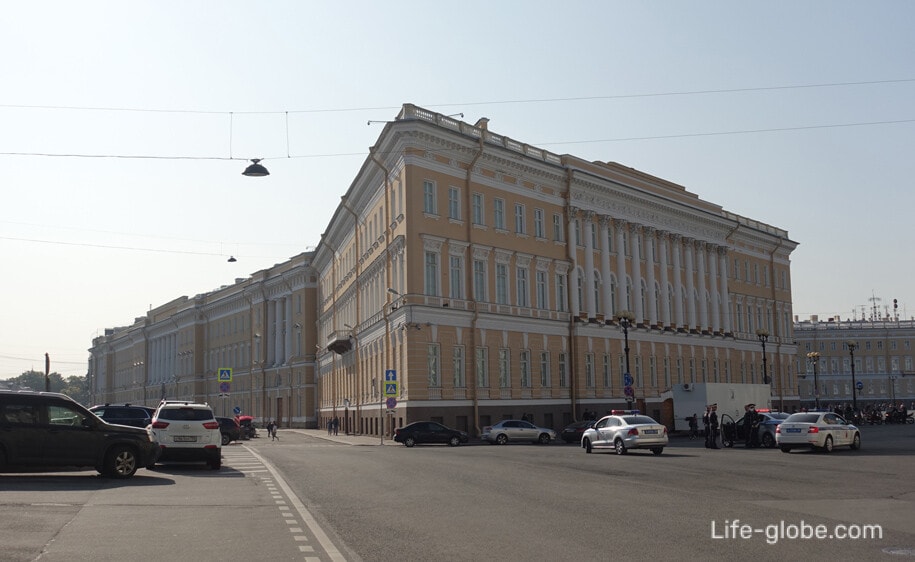
One of the architectural dominants of the General Staff building is the dome (the so-called "lantern dome"), towering over the western wing of the complex, made of metal and glass designed by engineer G. G. Krivoshein in 1902-1905.
This dome provided daylight to the library located under it and was erected on the site of the former low stone dome, designed by K. I. Rossi during the construction of the building.
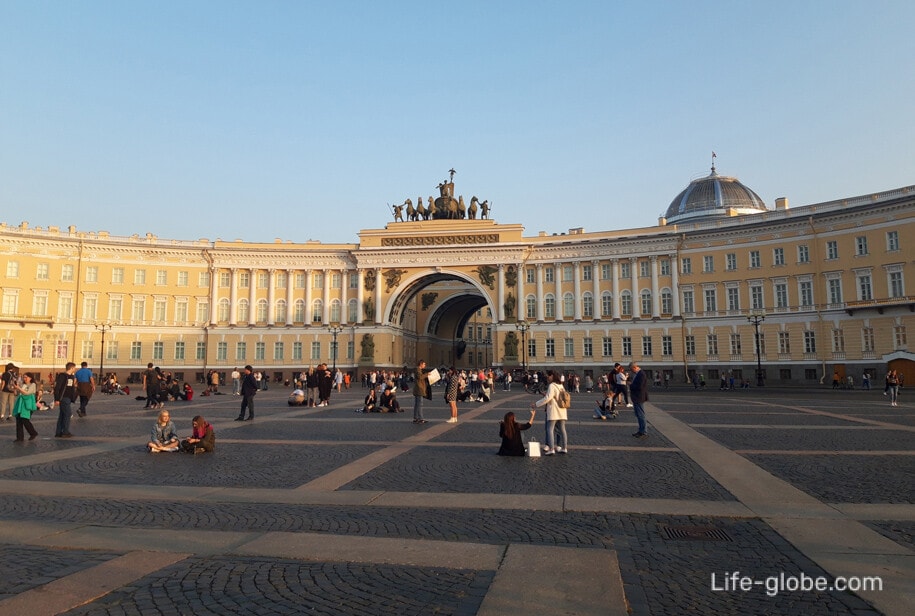
The central part of the General Staff building is the arch of the General Staff, which is a separate symbolic architectural object and the most striking part of the architectural complex of the General Staff.
The arch was built in 1826 as the main monument dedicated to the Patriotic War of 1812.
The Triumphal Arch was opened on October 24, 1828 and became the connecting link of the wings of the General Staff building and the final part of the appearance in the ensemble of buildings on Palace Square.
The architect of the arch was Karl Rossi.
In 1918, the arch was officially named the arch of the Red Army. The historical name was returned in 1944.
The triumphal Arch leads from the Palace Square (Bolshaya Morskaya Street) to Nevsky Prospekt.
The arch has expressive and clear architectural features with the grace of sculptural compositions that adorn the arch in abundance.
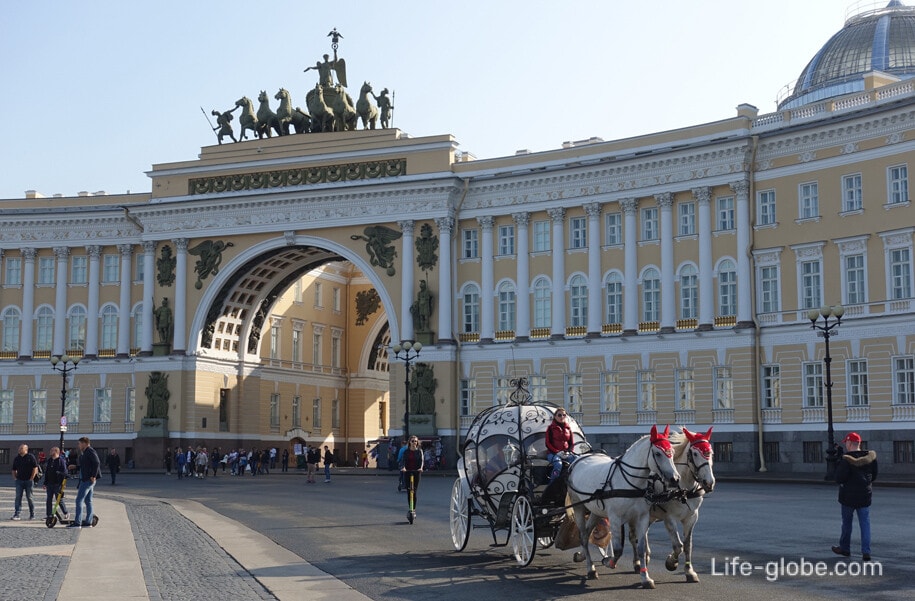
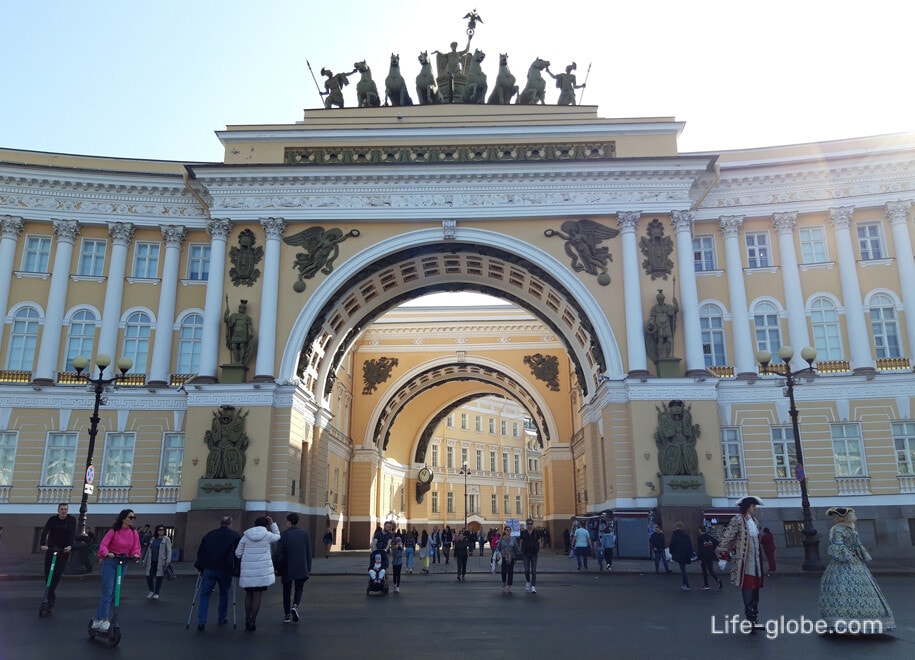
The main appearance of the arch is formed from the side of the Palace Square and is complemented by a sculptural composition (a symbol of military glory) - a triumphal chariot drawn by six horses, and located in the upper part of the arch.
The wild horses are held back on both sides by two warriors clad in Roman armor and armed with spears.
In the cart is depicted, in a standing position, the winged Roman goddess of victory Victoria, holding in her left hand a standard with a double-headed eagle. In the right hand of the goddess is a laurel wreath.
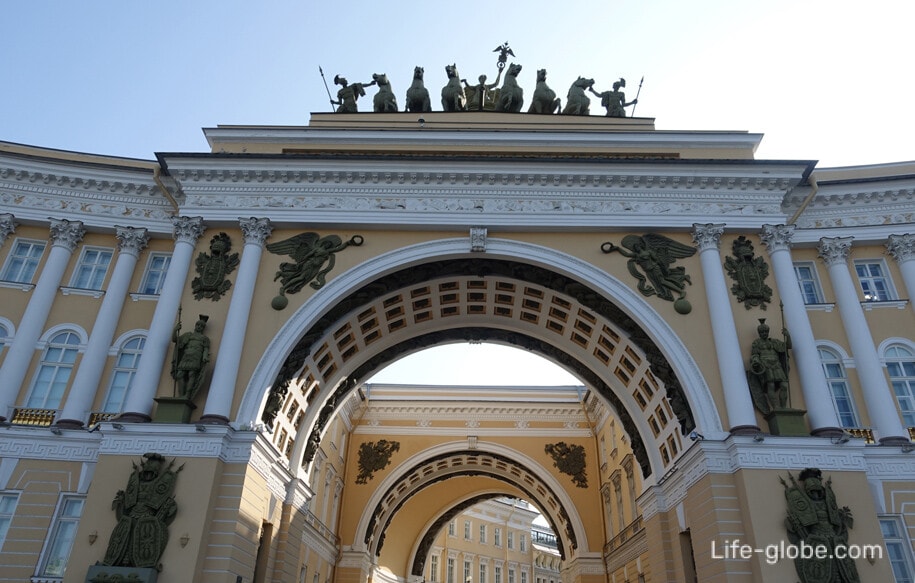
The arch itself consists of three interconnected arches with passages. Each of the three arches is decorated with bas-reliefs and architectural elements in the framing niches.
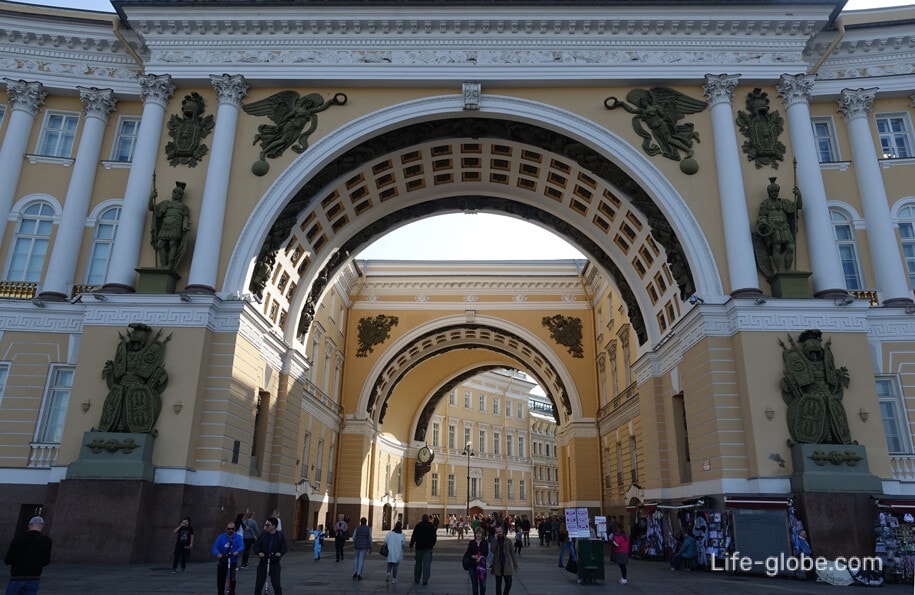
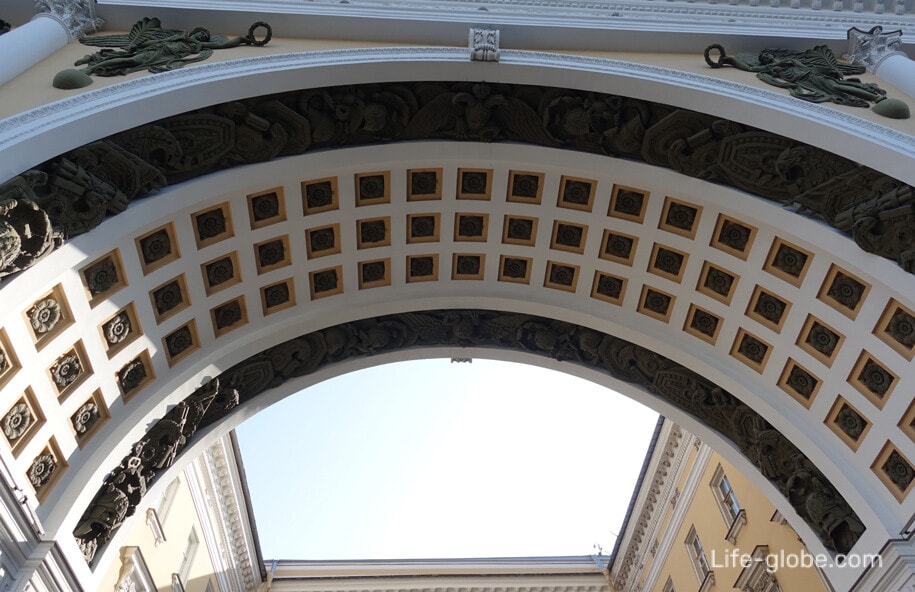
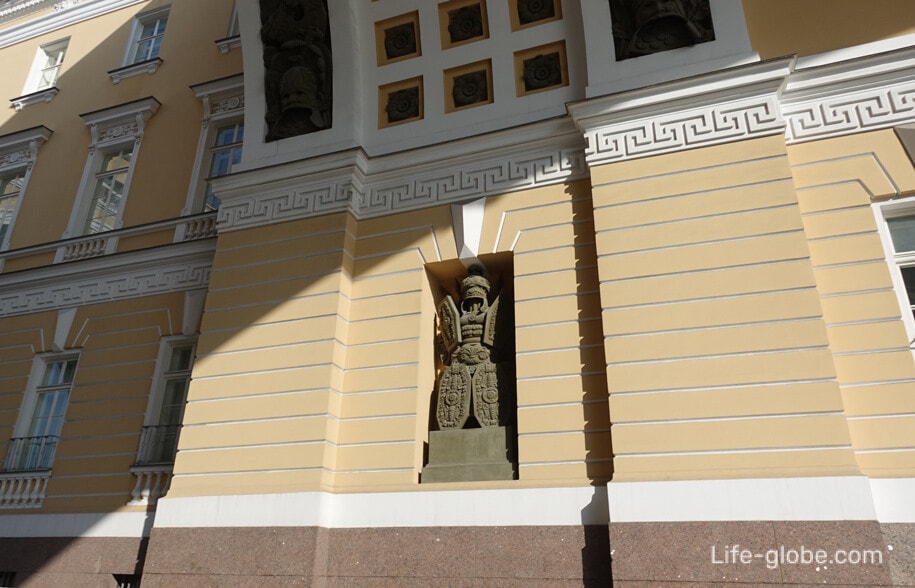
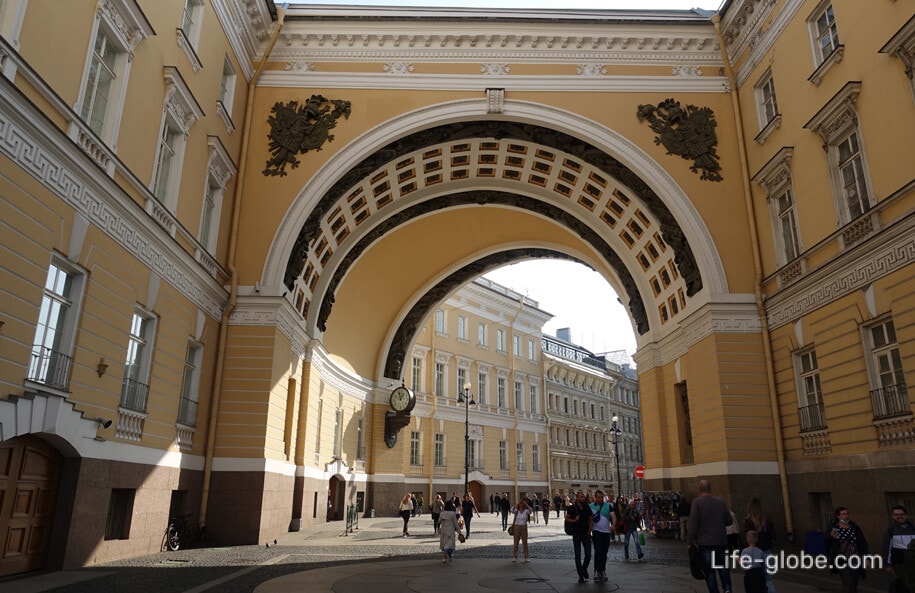
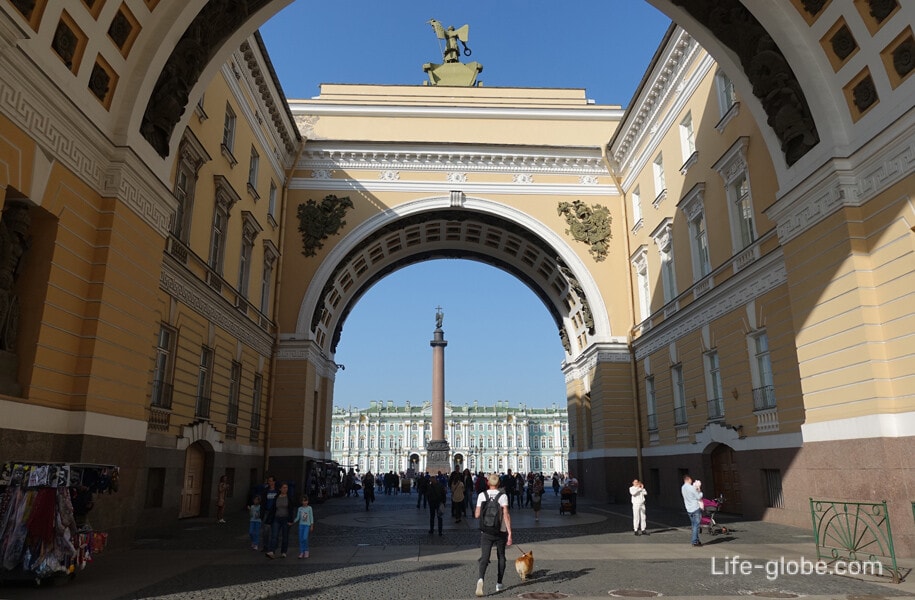
The third arch on the east side is decorated with the "Mendeleev Clock", which is also called the clock of the arch of the General Staff.
The clock was mounted on a decorative bracket on the wall of the arch in 1905 with the participation of the scientist D. I. Mendeleev.
The watch has a round double-sided dial with the inscription " Main Chamber of Weights and Measures. The exact time" ("The main Chamber of the mѣr and vѣsov. Exact time"). The diameter of the dials is 2 meters. The case is decorated with bronze.
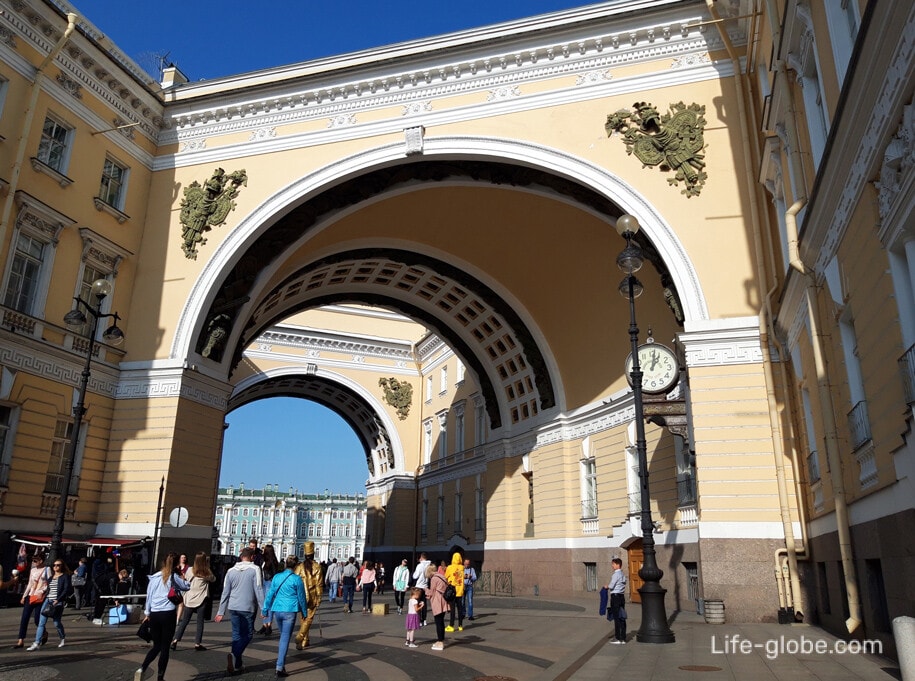
View of the arch of the General Staff and the pedestrian part of Bolshaya Morskaya Street from Nevsky Prospekt
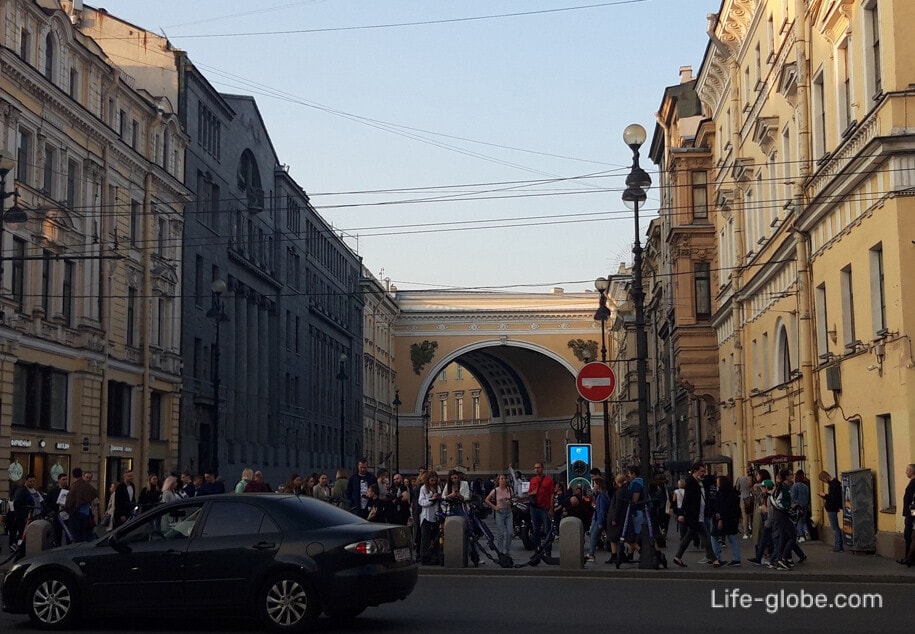
In the western part of the General Staff building is the command of the Western Military District of Russia.
The eastern part of the building was transferred to the State Hermitage Museum and houses the Hermitage's art collections - paintings from the 19th and 20th centuries, mainly Impressionist and post-Impressionist, as well as sculptures, halls in memory of Karl Faberge, the Guard Museum and the exhibition "Ministry of Foreign Affairs of Russia". Temporary (rotating) exhibitions are also held in the halls.
Website of the State HermitageMuseum: hermitagemuseum.
The museum in the Main Headquarters can also be visited as part of the tour
All accommodation facilities in Saint Petersburg, including in the city center and near the Palace Square, can be viewed and booked here